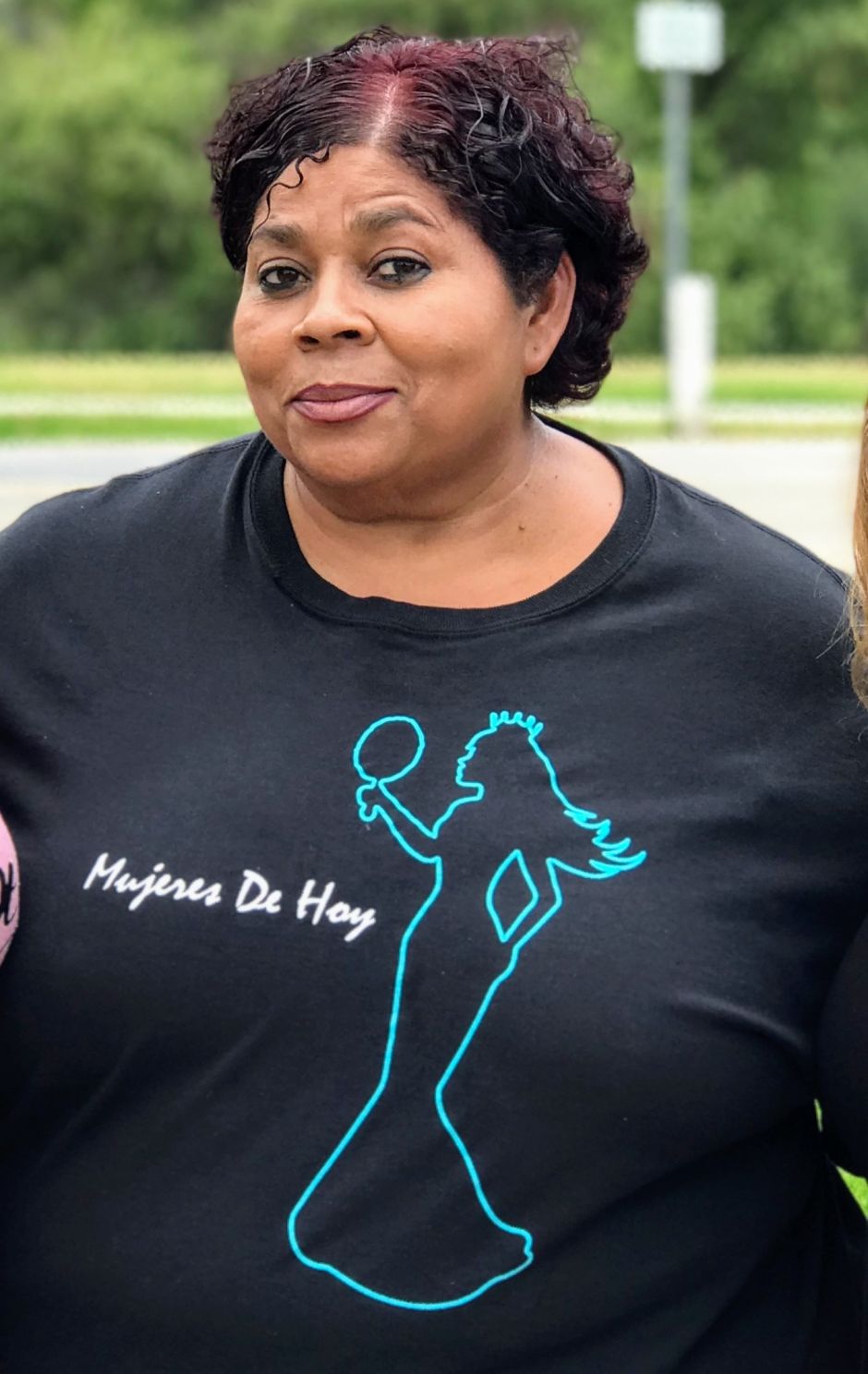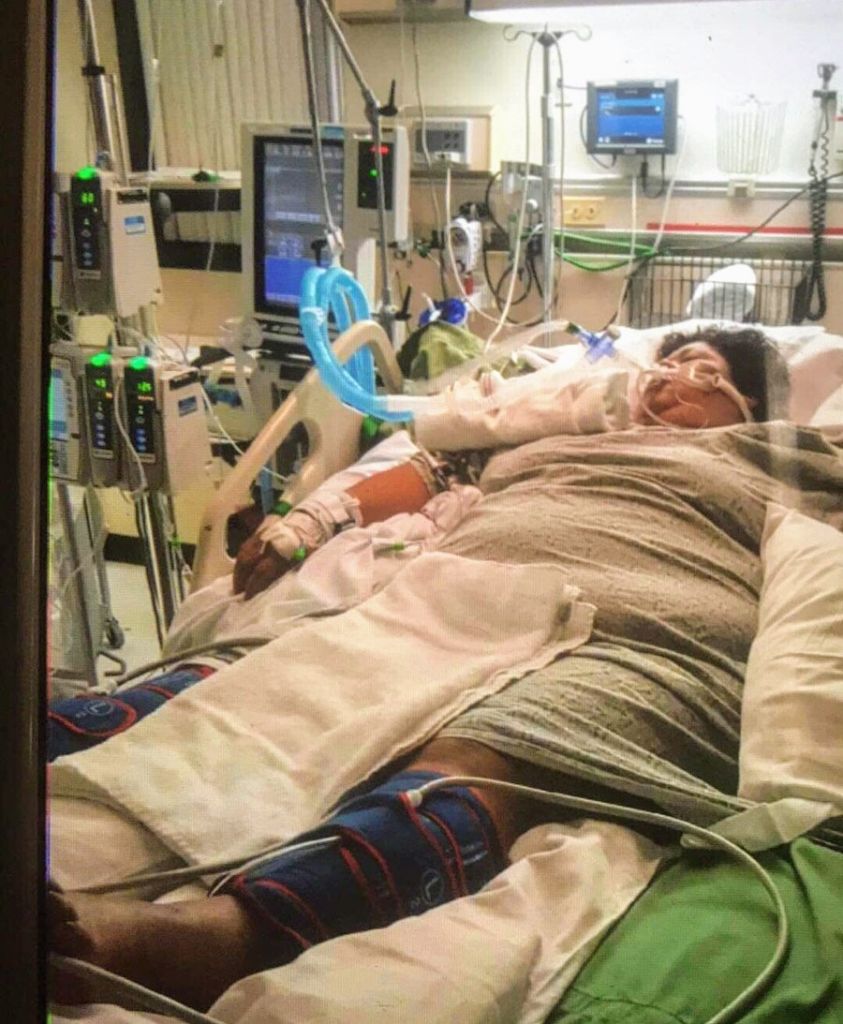Studies show that families without medical coverage are more likely to suffer from health problems and economic difficulties

The recent victory in California to expand the Medi-Cal medical insurance service to undocumented immigrants has had a bittersweet celebration.
The budget for fiscal year 2019-2020, signed by Governor Gavin Newsom, includes $ 98 million to finance Medi-Cal for undocumented immigrants up to 25 years old and with low income.
But people like Mayra Todd, 52, were left out of this benefit. The woman of Guatemalan origin said that three years ago she suffered an aneurysm in the thoracic aorta and thrombosis in her left leg.
Since then, Todd lives in a constant dilemma about how to deal with his health problems. Every month, the San Fernando Valley resident needs about $ 700 to buy a medicine called "Xarelto" that prevents dangerous clots in the legs. When he manages to raise the money and buy this medicine, he ration it so that it reaches him for more than a month. When he is not able to collect that money, he looks for other options, although they are not safe at all, but Todd points out that it is that or expect death.
“This month I did not have the medication and they told me to take aspirin to (circulate) the blood. They cost me $ 23, ”Todd said in August. "Also a naturist told me to drink prepared sea water and I drink it in the mornings."
Todd is an undocumented immigrant of low income, since in her home only her husband works. They have four American children but all of them are adults, which prevents them from even having the emergency Medi-Cal plan offered to people with minor children.
The provisions of the federal Medicaid program – Medi-Cal in California – prohibit payment to a state for medical assistance provided to a foreigner who has not legally entered the country.
And although California has just extended Medi-Cal coverage to young adults under 25 as of January, older undocumented people still fail to meet the requirements following the failure of the original version of a broader measure: Bill SB 29.
Todd is eligible to receive My Health LA, the Los Angeles County health program, designed to provide medical care for undocumented and low-income people.
However, the process to receive the necessary services under this program is very complex, as noted below, when the Center for Health Journalism He tried to get more details about why Todd does not have adequate access to medical care.
"I feel like they are playing with our health," Todd said. "For me, My Health LA only serves to take your blood pressure, weigh you and give you the recipe."
Studies show that families without health insurance are more likely to suffer from health problems and economic difficulties. Without coverage, some undocumented adults in California must continue to rely on programs for the homeless in the county and low-income people, as well as safety net services.
Stephanie Lemus, director of community affairs and advocate for the Monseñor Romero Clinic, in charge of the Department of Outreach and Eligibility, said her department is responsible for finding individualized options for each patient.
“We do a review of their history to see what they can qualify for. Whether for the full Medi-Cal, Emergency Medi-Cal plan, Covered California, Medicare or for some other program, ”said Lemus.
The director added that children from 0 to 19 years old already qualify for Medi-Cal and will soon be young people up to 25 years of age, regardless of their immigration status.
The new benefit is made possible by the modified version – in the budget for the fiscal year – of Bill SB 29, presented by Senator María Elena Durazo, written jointly by Senators Connie Leyva and Richard Roth and members of the Legislative Assembly State Miguel Santiago, Joaquín Arámbula and Eloise Reyes.
The original version of Bill SB 29 proposed to expand the Medi-Cal plan for all poor undocumented adults whose income does not exceed 138% of the federal poverty level. Therefore, a single undocumented adult would qualify only if their monthly income was equal to or less than $ 1,437.
However, a few months ago, Governor Newsom refused to sign the original version of bill SB 29, warning that California was not ready to allocate an additional $ 3.4 billion to provide coverage to approximately 1.26 million undocumented low-income adults.
However, bill SB 29 continues. Senator Durazo met with Governor Newsom in September and pledged to work with the legislature on extending Medi-Cal to undocumented immigrants over 65.
With this measure, approximately 30,000 adult California residents 65 years of age or older, who are undocumented and low-income, may receive the benefits of the Medi-Cal plan.
"Our health care system works best when all Californians have access to comprehensive medical care, including preventive treatment," Senator Durazo said in a statement.

Available Programs
While there is no rectification at the legislative level, Lemus said that undocumented persons who receive income slightly above the established limit are referred to the Los Angeles County General Hospital, if they do not wish to attend a clinic because they find it very expensive. There they can request to be enrolled in various types of health programs at a cost more within reach of their pocket.
"If the person receives income above the limit, they have the option to pay for a consultation or the hospital has other programs, such as ATP (Ability to Pay / Payment Capacity)."
Under these programs, undocumented people have no problems getting medical attention since they are paying for services.
Lemus added that people with a serious health problem – such as cancer or AIDS – if they have emergency Medi-Cal for a limited period, the attending physician can send information to the Medi-Cal plan.
Without stable coverage, Todd ran out of good options
Todd said he was unaware that he had high blood pressure since he had no symptoms until three years ago.
"Suddenly I felt a strong pain behind my back, as if they stuck a nail in my back," Todd said. "I began to feel that I was missing the movement of my legs and ran out of the restaurant where I was, but when I reached the parking lot I fell without being able to move."
At the hospital, doctors informed him that his pressure had risen to 289 (more than double the value considered normal) and had suffered an aneurysm. Todd was in an induced coma for 10 days.
Upon waking, his recovery was slow and he was not able to walk. Due to the severity of his aneurysm, it could not be operated. Days later he suffered a thrombosis.
"I had blood clots in my left leg due to fluid retention," Todd said.
When Todd was discharged, the doctor told him it would be essential to take a medication to reduce the risk of stroke, deep vein thrombosis, pulmonary embolism and other conditions. Unfortunately, and due to his legal situation in the current climate associated with medical care, Todd was unable to obtain the help needed to cover the cost of this medication.
My Health LA and its variations
The Los Angeles County My Health LA program is another option for low-income people over age 19 – regardless of immigration status – who earn income below the federal poverty level. But Todd's experience shows one of the limitations of the program.
Anna Gorman, director of Community Programs and Partnerships at the Los Angeles County Department of Health Services, which oversees My Health LA, said program participants receive free primary care through the home medical clinic.
"They can also access free medications through our pharmacy retail network and get free, urgent and specialized emergency care through the Los Angeles County Department of Health Services," Gorman said. "The program is designed to ensure that people who do not have insurance and cannot obtain it receive the necessary care."
However, understanding the program process is not always easy. This has been proven by Todd, who has had to face several problems when trying to receive what he needed for his treatment through the My Health LA plan.
After receiving advice from that plan, Todd said he got three of the four prescription drugs. The most expensive of the four, Xarelto, according to Todd, does not cover it.
In addition, Todd needs to have an ultrasound on his leg, the total cost of which is $ 2,000, an amount he does not have, but said that in the My Health LA plan he was suggested to enroll in the program Ability To Pay and thus make monthly payments to pay for the surgery, since the My Health LA plan does not cover this procedure.
Todd said he is still waiting to see how he will solve this situation.
Gorman explained that there is a formulary with a list of medications approved by the My Health LA plan, but if the medication prescribed to the patient is not included in that list, it cannot be obtained immediately.
"Your clinic doctor must make the request to add that medication to the list or to receive a similar medication from the existing list," Gorman said. "But we also educate doctors to use the drugs that are on the list."
Todd said the medicine was available, but when he asked for it, the pharmacist told him that his health plan did not cover the drug “Xarelto”. However, she received a gift bottle as a "courtesy" for being a new client.
"He gave it to me, but he assured me it is a very expensive medicine," Todd added.
It has been two months since Todd stopped taking this medicine for lack of money, and said that in all this time he has not had a relapse. Supposedly, you would be at risk of clots, if you do not take this medicine, those that could reach the heart and cause death.
"In all this time that I didn't take it, I was fine, but after he gave it to me (the pharmacist), I realized that when I took it, my leg swelled and made me tired," Todd said.
Todd is happy to have received that gift, but wonders if it was thanks to the intervention of a journalist and the Center for Health Journalism, and hopes to see what will happen next month.
"The reality is that without papers you can work and eat, but get health care, that's harder," Todd said. "If God wants me to go (to die), well, no way, but I do not think about that, I know that when your time comes, there is nothing to do," said the Guatemalan.
Jacqueline is a journalist who is part of the USC Center project for Health Journalism News Collaborative








